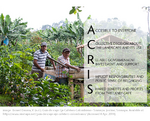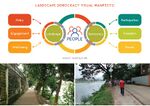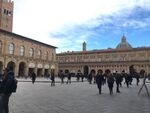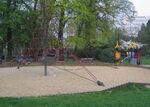LED Online Seminar 2019 - Working Group 3: Difference between revisions
Shaurav.paul (talk | contribs) |
Shaurav.paul (talk | contribs) |
||
| Line 119: | Line 119: | ||
---- | ---- | ||
=== Landscape Symbols Author | === Landscape Symbols Author 3: Shaurav Paul === | ||
<gallery caption=" " widths="150px" heights="150px" perrow="5"> | <gallery caption=" " widths="150px" heights="150px" perrow="5"> | ||
Image:Piazza Maggiore Bologna.jpg |This is the | Image:Piazza Maggiore Bologna.jpg |This is the center space of Stuttgart Messe. Here, the people are always busy with conference, exhibition or trade fair type corporate and artificial looking things. But within this place, there are some soft corners- justified with trees and natures. It shows us that nothing is perfect without a touch of nature. | ||
) | |||
[[File:Piazza Maggiore Bologna.jpg]] | [[File:Piazza Maggiore Bologna.jpg]] | ||
Image:Botanic Garden Liège.jpg| | Image:Botanic Garden Liège.jpg| Those are the foliage of trees in a reserved forest at Stuttgart. All of the foliage have covered the sky and they have also maintained their own territory respectively. They never conflict with others territory but also represent their own status. | ||
[[File:Botanic_Garden_Liège.jpg]] | [[File:Botanic_Garden_Liège.jpg]] | ||
Image:Place des amis du folklore.jpg| | Image: Place des amis du folklore.jpg|This is a part of Stuttgart U-Garden project. Here, we can see the perfect juxtaposition of Nature, Landscape and Man-made built form. Every important element of the environment are all together in here. People live here, work here, do their recreational activity here. | ||
[[File:Place_des_amis_du_folklore.jpg]] | [[File:Place_des_amis_du_folklore.jpg]] | ||
Revision as of 20:41, 4 May 2019
--> Back to working group overview
Dear working group members. This is your group page and you will be completing the template gradually as we move through the seminar. Good luck and enjoy your collaboration!
Assignment 1 - Reading and Synthesizing Core Terminology
- You can read more details about this assignment here
- Readings are accessible via the resources page
Step 1: Your Landscape Democracy Manifestoes
- Initial manifesto yourname
Azra's manifesto
Step 2: Define your readings
- Please add your readings selection for the terminology exercise before April 24:
A: Landscape and Democracy -Jackson, John Brinckerhoff (1980): "By way of conclusion. How to study the landscape
B: Concepts of Participation
C: Community and Identity
-Hester, Randolph (2006): Design for Ecological Democracy
D: Designing -Hester, Randolph: Democratic Drawing - Techniques for Participatory Design
E: Communicating a Vision
Steps 3 and 4: Concepts Selection and definition
- Each group member selects three relevant concepts derived from his/her readings and synthesize them/publish them on the wiki by May 15, 2019
- Group members reflect within their groups and define their chosen concepts into a shared definition to be posted on the wiki by June 12, 2019.
- Other group members will be able to comment on the definitions until June 30, 2019
- Each group will also report on their process to come to a set of shared definitions of key landscape democracy concepts on the wiki documentation until July 12, 2019
Concepts and definitions
Author 1: ...
- ......
- .......
- .......
Author 2: ...
- ......
- .......
- .......
Author 3: ...
- ......
- .......
- .......
Author 4: Shaurav Paul
- A: Landscape and Democracy: Jackson, John Brinckerhoff (1980): "By way of conclusion. How to study the landscape
- C: Community and Identity: Hester, Randolph (2006): Design for Ecological Democracy
- D: Designing: Hester, Randolph: Democratic Drawing - Techniques for Participatory Design
Step 5: Reflection
Step 6: Revised manifestoes
- please look again at your initial manifestoes and update them with any new aspects/prespectives you have taken up during this seminar
Assignment 2 - Your Landscape Symbols
- You can read more details about this assignment here
Landscape Symbols Author 1: Melissa
- Symbol yourname photovoice2
This image represents a place where anyone can have access to nature and landscape. Symbols, then, are open spaces without predetermined uses and without absolute pretensions.Symbolos are places or objects that allow the user to create their own meaning of use and their own experience
- Symbol yourname photovoice3
add a caption (one paragraph max) description of the symbolism, interpretation, as well as geo-location
Landscape Symbols Author 2: Michael
This is the Piazza Maggiore in Bologna in Italy. It’s pretty simple but on this picture we can have a overview of buildings (arranged a fiew undred years ago by men) and people enjoying life in this square. It’s a place where people share, talk communicate and have a good time. Nowadays, it is a social place. Even if the building was built a long time ago it serves now a public purpose with a view on the piazza. These building physically enclose the piazza but there are still some openings with to let people walk freely. There are also some events quite frequently that people from everywhere can enjoy.)
This is a park located in Liège in Belgium. This park shows a playground where children can play and also where old people can seat around, have a walk. This is a place where people can really enjoy life, have a drink and just relax. As said just before, this place is shared by diffrent generations and so it is a good way to share their knoldege
Located in Tilff, a small village in Belgium, this is again a public place where you can see bars all around. There are some events organised quite often but this common space is a smaller scale than the other public spaces but I chose this one because, I already enjoyed a few events there. For me it is a symbol of democracy because before making any changement on this public space, the local inhabitants are requested to talk about the projects the want to do there. The final decision it take by representatives chosen by the local people.
Landscape Symbols Author 3: Shaurav Paul
This is the center space of Stuttgart Messe. Here, the people are always busy with conference, exhibition or trade fair type corporate and artificial looking things. But within this place, there are some soft corners- justified with trees and natures. It shows us that nothing is perfect without a touch of nature.
- )
Assignment 3 - Role Play on Landscape Democracy "movers and shakers"
- You can read more details about this assignment here
Assignment 4 - Your Landscape Democracy Challenge
- You can read more details about this assignment here
- Each group member will specify a landscape democracy challenge in his/her environment
Landscape Democracy Challenge 1
- Give a title to your challenge
- Yourname challenge 1.jpg
caption: why did you select this case?
- Yourname challenge 2.jpg
caption: what is the issue/conflict (1)
- Yourname challenge 3.jpg
caption: what is the issue/conflict (2)
- Yourname challenge 4.jpg
caption: who are the actors?
Your references:
- ...
- ...
Landscape Democracy Challenge 2
- Give a title to your challenge
- Yourname challenge 1.jpg
caption: why did you select this case?
- Yourname challenge 2.jpg
caption: what is the issue/conflict (1)
- Yourname challenge 3.jpg
caption: what is the issue/conflict (2)
- Yourname challenge 4.jpg
caption: who are the actors?
Your references:
- ...
- ...
Landscape Democracy Challenge 3
- Give a title to your challenge
- Yourname challenge 1.jpg
caption: why did you select this case?
- Yourname challenge 2.jpg
caption: what is the issue/conflict (1)
- Yourname challenge 3.jpg
caption: what is the issue/conflict (2)
- Yourname challenge 4.jpg
caption: who are the actors?
Your references:
- ...
- ...
Landscape Democracy Challenge 4
- Give a title to your challenge
- Yourname challenge 1.jpg
caption: why did you select this case?
- Yourname challenge 2.jpg
caption: what is the issue/conflict (1)
- Yourname challenge 3.jpg
caption: what is the issue/conflict (2)
- Yourname challenge 4.jpg
caption: who are the actors?
Your references:
- ...
- ...
Your Democratic Change Process
- Add Title
- Your Democratic Change Process Slide1.jpg
caption: ...
- Your Democratic Change Process Slide2.jpg
caption: ...
- Your Democratic Change Process Slide3.jpg
caption: ...
- Your Democratic Change Process Slide4.jpg
caption: ...
Reflection
- ....
- ....
- ....
Conclusion:
- ....
- ....
- ....
Your references
- ...
- ...
- ...






